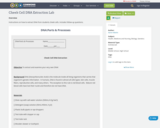
Instructions on how to extract DNA from students cheek cells. Includes follow-up questions.
- Subject:
- Biology
- Genetics
- Health, Medicine and Nursing
- Material Type:
- Activity/Lab
- Author:
- Aaron Martin
- Date Added:
- 08/18/2021

Instructions on how to extract DNA from students cheek cells. Includes follow-up questions.

How homologous chromosomes exchange fragments in prophase I. Tetrads, chiasmata, and alleles.
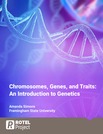
This resource is intended for an introductory or intermediate-level college genetics course. It begins with an exploration of DNA and genome structure and continues with a study of the molecular mechanisms that drive gene expression. Concepts of classical transmission genetics are linked to the molecular mechanisms that underlie observable phenotypes. It concludes with specific topics that synthesize information from both molecular and transmission genetics, including consideration of topics like epigenetics, cancer biology, and evolution. Examples of both historical and current problems in genetics are presented, along with conversations of the relationship between genetics and society.
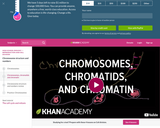
Overview of DNA transcription, translation, and replication during mitosis and meiosis. Learn about chromosomes, chromatids, and chromatin.

The topic of this video module is how to classify animals based on how closely related they are. The main learning objective is that students will learn how to make phylogenetic trees based on both physical characteristics and on DNA sequence. Students will also learn why the objective and quantitative nature of DNA sequencing is preferable when it come to classifying animals based on how closely related they are. Knowledge prerequisites to this lesson include that students have some understanding of what DNA is and that they have a familiarity with the base-pairing rules and with writing a DNA sequence.

In complete dominance, only one allele in the genotype is seen in the phenotype. In codominance, both alleles in the genotype are seen in the phenotype. In incomplete dominance, a mixture of the alleles in the genotype is seen in the phenotype.
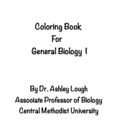
This is a coloring book that I drew and designed as a fun way for my students to review information and/or doodle on. The pictures are inspired by images I use in my General Biology I class, and are presented in the same order as they are discussed in my class. The coloring book is NOT designed as an alternative to attending lecture, studying notes, etc. You can download the PDF of the coloring book and then color the pictures on an app (like using an iPad and Apple Pencil) or print out the images and color them using your preferred method (like with colored pencils).
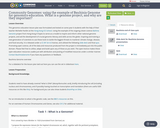
This genomics education lesson plan was formulated and tested on some year 6 students with the help of their teacher Michelle Pardini at the Hong Kong ICS School. Using the example of the ongoing citizen science Bahinia Genome project from Hong Kong it hopes to serve as a model to inspire and inform other national genome projects, and aid the development of crucial genomic literacy and skills across the globe. Inspiring and training a new generation of scientists to use these tools to tackle the biggest threats to mankind: climate change, disease, and food security. It is released under a CC-BY SA 4.0 license, and utilised the following slide deck and final quiz. Promoting open science, all of the data and resources produced from the project is immediately put into the public domain. Please feel free to utilise, adapt and build upon any of these as you wish. The open licence makes these open education resources usable just with attribution and posting of modified resources under a similar manner. Contact BauhiniaGenome if you have any questions or feedback.Bauhinia Genome overviewFor a slidedeck for the lesson plan laid out here you can use the set in slideshare here.

Host Harry Kreisler Welcomes Professor Sir John Gurdon for a discussion of advances in research on cell biology. Sir John reflects on his career as a scientist including his path breaking research on cloning. He offers insights into the implications of the revolution in the biological sciences.(46 min)
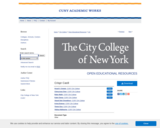
Precise modification of faulty genes for repair has been one of the most important goals in medicine. It is now finally within the realm of possibility thanks to the gene editing tool CRISPR. This microbial adaptive immune system can copy and cut specific DNA sequences. This animation provides a visual introduction of this revolutionary genetic tool.

Precise modification of faulty genes for repair has been one of the most important goals in medicine. It is now finally within the realm of possibility thanks to the gene editing tool CRISPR. This microbial adaptive immune system can copy and cut specific DNA sequences. This animation provides a visual introduction of this revolutionary genetic tool.
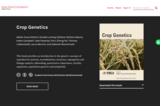
Short Description:
This book provides an introduction to the genetic concepts of reproductive systems, recombination, mutation, segregation and linkage analysis, inbreeding, quantitative inheritance, fertility regulation, population genetics and polyploidy.
Long Description:
This book provides an introduction to the genetic concepts of reproductive systems, recombination, mutation, segregation and linkage analysis, inbreeding, quantitative inheritance, fertility regulation, population genetics and polyploidy.
Word Count: 61452
(Note: This resource's metadata has been created automatically by reformatting and/or combining the information that the author initially provided as part of a bulk import process.)

Learn about DNA (deoxyribonucleic acid). Overview of DNA bases, complementary base pairing, and the structure of the double helix.
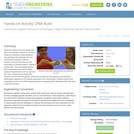
Students reinforce their knowledge that DNA is the genetic material for all living things by modeling it using toothpicks and gumdrops that represent the four biochemicals (adenine, thiamine, guanine, and cytosine) that pair with each other in a specific pattern, making a double helix. They investigate specific DNA sequences that code for certain physical characteristics such as eye and hair color. Student teams trade DNA "strands" and de-code the genetic sequences to determine the physical characteristics (phenotype) displayed by the strands (genotype) from other groups. Students extend their knowledge to learn about DNA fingerprinting and recognizing DNA alterations that may result in genetic disorders.
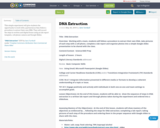
This simple experiment will give students the opportunity to work with a partner(s) as they follow a procedure to extract their own DNA. They will record the steps in written and digital forms using an lab report template, cell phone camera and Google Slides.
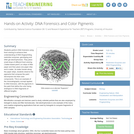
Students perform DNA forensics using food coloring to enhance their understanding of DNA fingerprinting, restriction enzymes, genotyping and DNA gel electrophoresis. They place small drops of different food coloring ("water-based paint") on strips of filter paper and then place one paper strip end in water. As water travels along the paper strips, students observe the pigments that compose the paint decompose into their color components. This is an example of the chromatography concept applied to DNA forensics, with the pigments in the paint that define the color being analogous to DNA fragments of different lengths.

This is a technology based, hands-on Biology lesson on the types of mutations that can occur during DNA replication. Students will complete a virtual lab on DNA Mutations. Mutations involve a physical change to genetic material that results in the abnormal encoding of protein sequences. The students will complete mRNA and protein sequences based on the information provided. The students will identify the number of amino acids changed and how they think this mutation will impact the organism. This lesson plan results from a collaboration between the Alabama State Department of Education and ASTA.
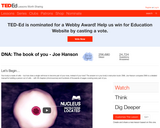
Your body is made of cells -- but how does a single cell know to become part of your nose, instead of your toes? The answer is in your body's instruction book: DNA. Joe Hanson compares DNA to detailed manual for building a person out of cells -- with 46 chapters (chromosomes) and hundreds of thousands of pages covering every part of you.

As a class, students work through an example showing how DNA provides the "recipe" for making our body proteins. They see how the pattern of nucleotide bases (adenine, thymine, guanine, cytosine) forms the double helix ladder shape of DNA, and serves as the code for the steps required to make genes. They also learn some ways that engineers and scientists are applying their understanding of DNA in our world.

Introduction to DNA cloning.